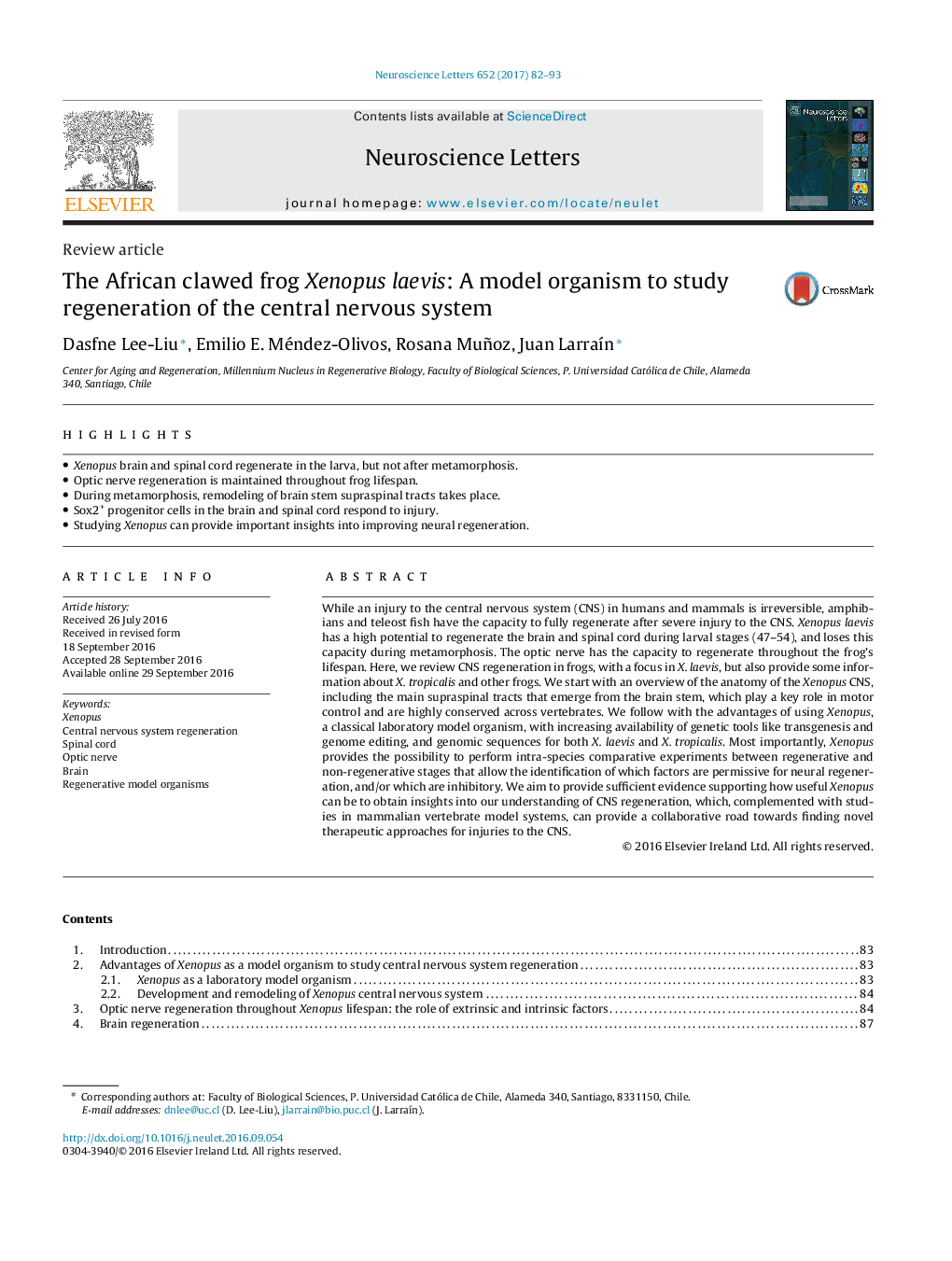| کد مقاله | کد نشریه | سال انتشار | مقاله انگلیسی | نسخه تمام متن |
|---|---|---|---|---|
| 5738651 | 1615047 | 2017 | 12 صفحه PDF | دانلود رایگان |

- Xenopus brain and spinal cord regenerate in the larva, but not after metamorphosis.
- Optic nerve regeneration is maintained throughout frog lifespan.
- During metamorphosis, remodeling of brain stem supraspinal tracts takes place.
- Sox2+ progenitor cells in the brain and spinal cord respond to injury.
- Studying Xenopus can provide important insights into improving neural regeneration.
While an injury to the central nervous system (CNS) in humans and mammals is irreversible, amphibians and teleost fish have the capacity to fully regenerate after severe injury to the CNS. Xenopus laevis has a high potential to regenerate the brain and spinal cord during larval stages (47-54), and loses this capacity during metamorphosis. The optic nerve has the capacity to regenerate throughout the frog's lifespan. Here, we review CNS regeneration in frogs, with a focus in X. laevis, but also provide some information about X. tropicalis and other frogs. We start with an overview of the anatomy of the Xenopus CNS, including the main supraspinal tracts that emerge from the brain stem, which play a key role in motor control and are highly conserved across vertebrates. We follow with the advantages of using Xenopus, a classical laboratory model organism, with increasing availability of genetic tools like transgenesis and genome editing, and genomic sequences for both X. laevis and X. tropicalis. Most importantly, Xenopus provides the possibility to perform intra-species comparative experiments between regenerative and non-regenerative stages that allow the identification of which factors are permissive for neural regeneration, and/or which are inhibitory. We aim to provide sufficient evidence supporting how useful Xenopus can be to obtain insights into our understanding of CNS regeneration, which, complemented with studies in mammalian vertebrate model systems, can provide a collaborative road towards finding novel therapeutic approaches for injuries to the CNS.
Journal: Neuroscience Letters - Volume 652, 23 June 2017, Pages 82-93